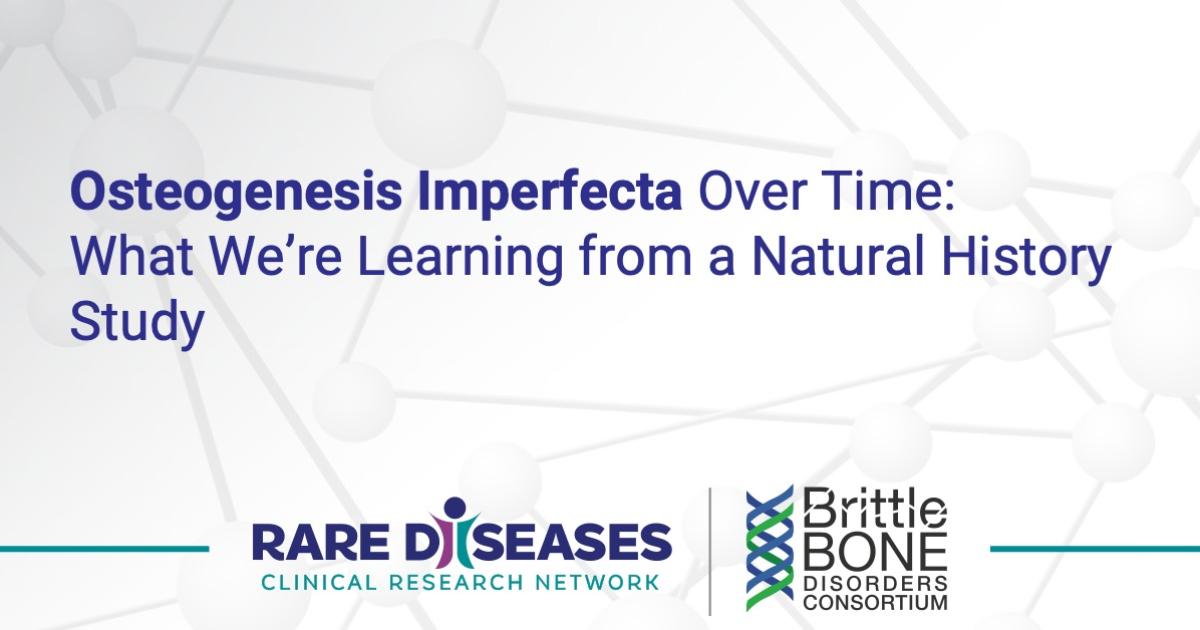Osteogenesis imperfecta (OI) is a group of 21 rare, inherited disorders caused by 19 gene mutations resulting in fragile bones that break easily. Symptoms include skeletal and joint deformities, chronic pain, hearing loss, a bluish tint to the sclerae (whites of the eyes), dental problems, and respiratory problems.
To learn more about the natural history of individuals with OI, the Brittle Bone Disorders Consortium (BBDC) is conducting a “Longitudinal Study of Osteogenesis Imperfecta.” The team is performing a long-term follow-up of a large group of people with OI to investigate vertebral compression fractures of the spine, scoliosis (curvature of the spine), dental health, and more.
Here, lead investigator V. Reid Sutton, MD, and OI type 1 patient Robin Wright share more about the study and what it’s like to participate.
What makes this study unique?
Dr. Sutton: OI affects many organ systems and consequently we have an incredible variety of studies that address the many challenges that individuals with OI face. This study assesses natural history of OI and response to medical, surgical, and dental therapies, as well as physical function and quality of life.
We also have a great partner in the OI Foundation which has done an incredible job of outreach to the community.
How did you become involved with this study, and why did you decide to join?
Wright: The OI Foundation asked all of us to participate through their newsletter and announcements during their biennial national conferences. This is very important information that all of us with OI can glean from.
What are we learning about OI from this study?
Dr. Sutton: While we are learning many things about OI, the greatest concern from our patient community centers on pain and wellbeing. We have a project recently funded by the National Institute of Mental Health (NIMH) and the National Institute of Arthritis and Musculoskeletal and Skin Diseases (NIAMS) focusing on these concerns. We have identified that many individuals with OI not only have significant concerns regarding both acute and chronic pain, but also are often fearful of experiencing another pain event based upon past pain traumas. Despite these challenges, a publication under review has identified coping strategies that individuals with OI employ to make them resilient and improve their personal wellness.
What is it like to participate in this study?
Wright: The process was easy and the results of the study were fascinating. So many common denominators within our population, yet so many differences in presentation and abilities.
What are the successes and challenges of this study?
Dr. Sutton: While OI is, of course, a rare disease, through our strong partnership with the OI Foundation, we have been able to meet our recruitment goal of enrolling 1000 participants into this study. We have also had successful partnerships with businesses (Sanofi and Invisalign) that have allowed us to advance therapeutic options for individuals with OI. The greatest challenge for us has been staying engaged with longitudinal study participants during the pandemic and getting back to normal operations.
How is this study contributing to clinical trial readiness?
Dr. Sutton: Two biopharma companies (Ultragenyx and Sanofi) have requested and received data from this study to plan their FDA clinical trial programs for OI.
What excites you about this study?
Wright: That we in the OI community can talk openly and freely about the challenges and genetics that we may share, and how we can adapt to them.
How will this study impact patients?
Dr. Sutton: In addition to the new therapies noted above, we are developing a large archive of radiographs that will be available to the community. The radiographs are read centrally by the University of Ottawa Bone Health Research Group and will be available to use for research even after the BBDC’s work has been completed.
How could this study impact your life?
Wright: It could greatly impact my life so that I know what to look for as I age, and how to deal with any challenges that may arise. And to celebrate new research which stems from our conversations.
What is the status of this study, and what’s next?
Dr. Sutton: We have learned an immense amount about OI over the past nine years and are looking forward to continuing our work. The knowledge we have gained is informing what we should focus on in the final years of the BBDC. Specifically, we are working with the OI Foundation and the community of patients and researchers to understand what data we should collect to have the most impact in creating a great resource for researchers in the future.
The Brittle Bone Disorders Consortium (BBDC) is part of the Rare Diseases Clinical Research Network (RDCRN), which is funded by the National Institutes of Health (NIH) and led by the National Center for Advancing Translational Sciences (NCATS) through its Division of Rare Diseases Research Innovation (DRDRI). BBDC is funded under grant number U54AR068069 as a collaboration between NCATS, the National Institute of Arthritis and Musculoskeletal and Skin Diseases (NIAMS), the Eunice Kennedy Shriver National Institute of Child Health and Human Development (NICHD), the National Institute of Mental Health (NIMH), and the National Institute of Dental and Craniofacial Research (NIDCR).






